Arko Barman
Rice University, Houston, United States
Graph-Based Biomarker Discovery and Interpretation for Alzheimer's Disease
Nov 27, 2024Abstract:Early diagnosis and discovery of therapeutic drug targets are crucial objectives for the effective management of Alzheimer's Disease (AD). Current approaches for AD diagnosis and treatment planning are based on radiological imaging and largely inaccessible for population-level screening due to prohibitive costs and limited availability. Recently, blood tests have shown promise in diagnosing AD and highlighting possible biomarkers that can be used as drug targets for AD management. Blood tests are significantly more accessible to disadvantaged populations, cost-effective, and minimally invasive. However, biomarker discovery in the context of AD diagnosis is complex as there exist important associations between various biomarkers. Here, we introduce BRAIN (Biomarker Representation, Analysis, and Interpretation Network), a novel machine learning (ML) framework to jointly optimize the diagnostic accuracy and biomarker discovery processes to identify all relevant biomarkers that contribute to AD diagnosis. Using a holistic graph-based representation for biomarkers, we highlight their inter-dependencies and explain why different ML models identify different discriminative biomarkers. We apply BRAIN to a publicly available blood biomarker dataset, revealing three novel biomarker sub-networks whose interactions vary between the control and AD groups, offering a new paradigm for drug discovery and biomarker analysis for AD.
Deep object detection for waterbird monitoring using aerial imagery
Oct 10, 2022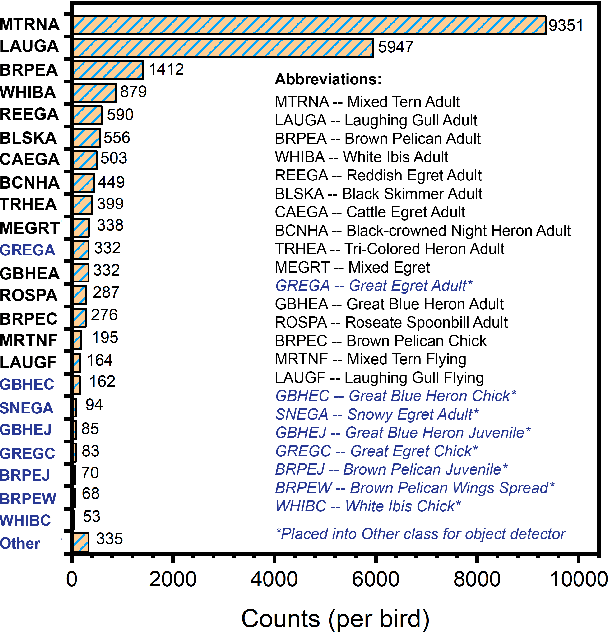
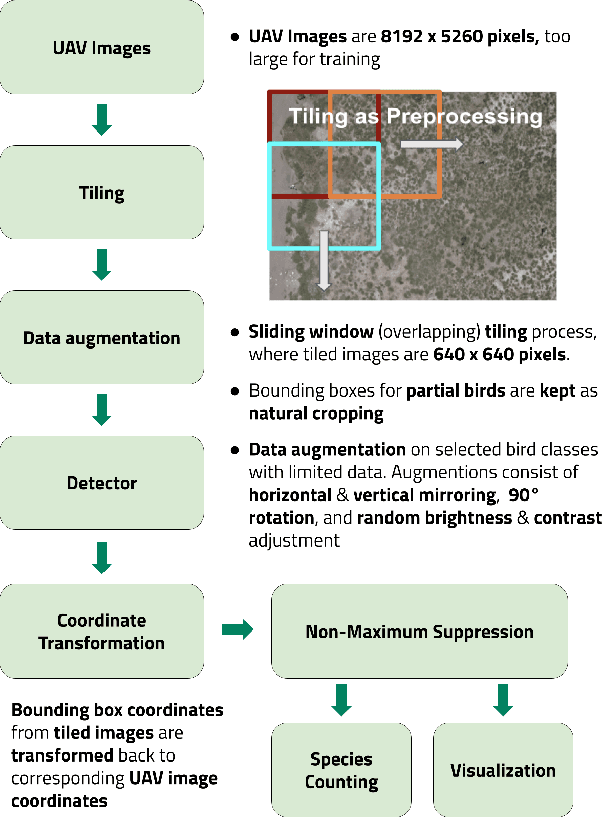
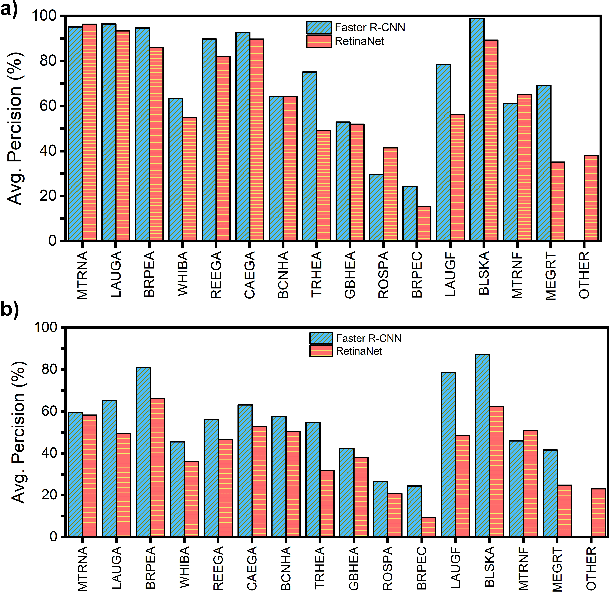
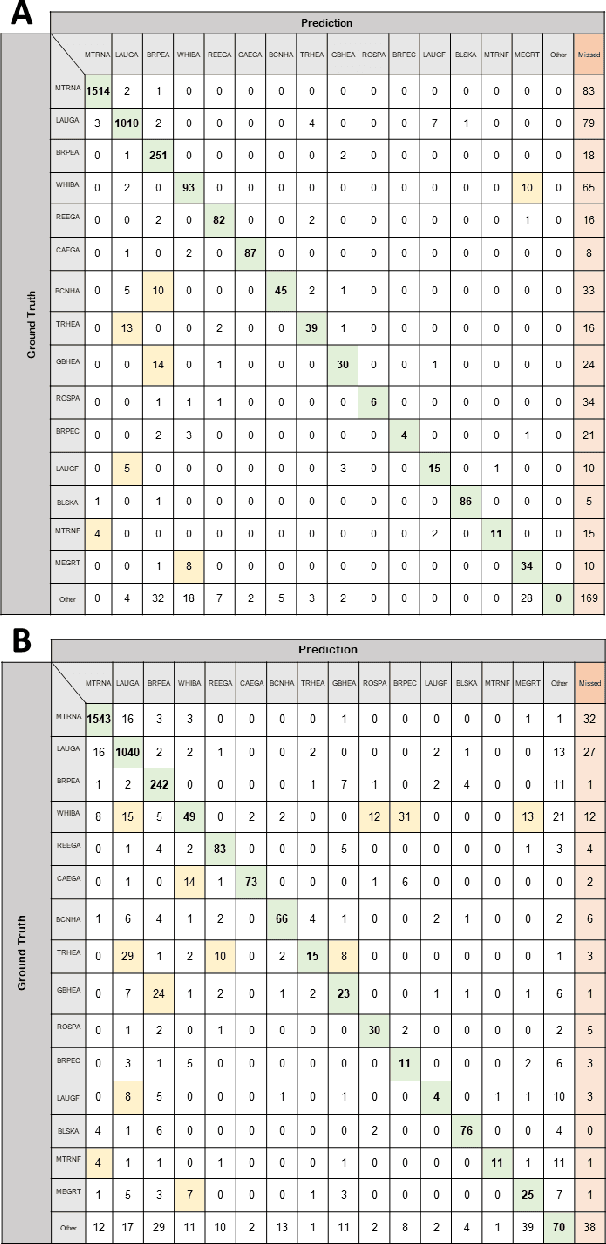
Abstract:Monitoring of colonial waterbird nesting islands is essential to tracking waterbird population trends, which are used for evaluating ecosystem health and informing conservation management decisions. Recently, unmanned aerial vehicles, or drones, have emerged as a viable technology to precisely monitor waterbird colonies. However, manually counting waterbirds from hundreds, or potentially thousands, of aerial images is both difficult and time-consuming. In this work, we present a deep learning pipeline that can be used to precisely detect, count, and monitor waterbirds using aerial imagery collected by a commercial drone. By utilizing convolutional neural network-based object detectors, we show that we can detect 16 classes of waterbird species that are commonly found in colonial nesting islands along the Texas coast. Our experiments using Faster R-CNN and RetinaNet object detectors give mean interpolated average precision scores of 67.9% and 63.1% respectively.
COVID-19 Smart Chatbot Prototype for Patient Monitoring
Mar 11, 2021

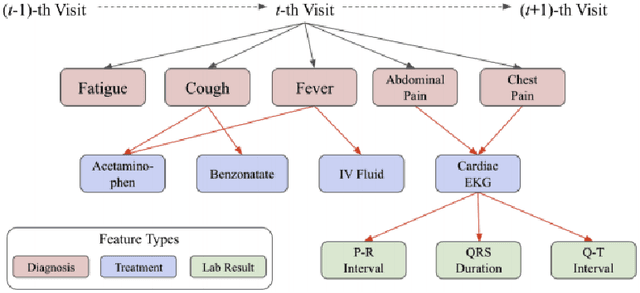
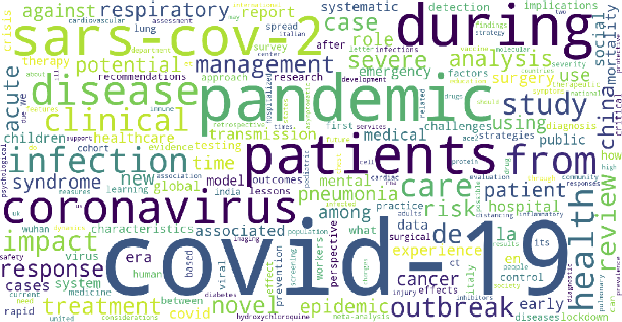
Abstract:Many COVID-19 patients developed prolonged symptoms after the infection, including fatigue, delirium, and headache. The long-term health impact of these conditions is still not clear. It is necessary to develop a way to follow up with these patients for monitoring their health status to support timely intervention and treatment. In the lack of sufficient human resources to follow up with patients, we propose a novel smart chatbot solution backed with machine learning to collect information (i.e., generating digital diary) in a personalized manner. In this article, we describe the design framework and components of our prototype.
Time Series Analysis and Forecasting of COVID-19 Cases Using LSTM and ARIMA Models
Jun 05, 2020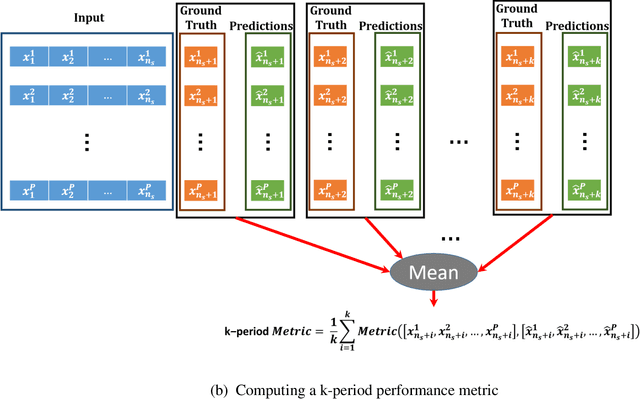
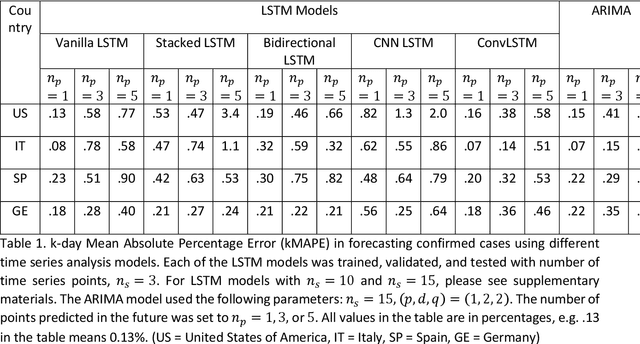

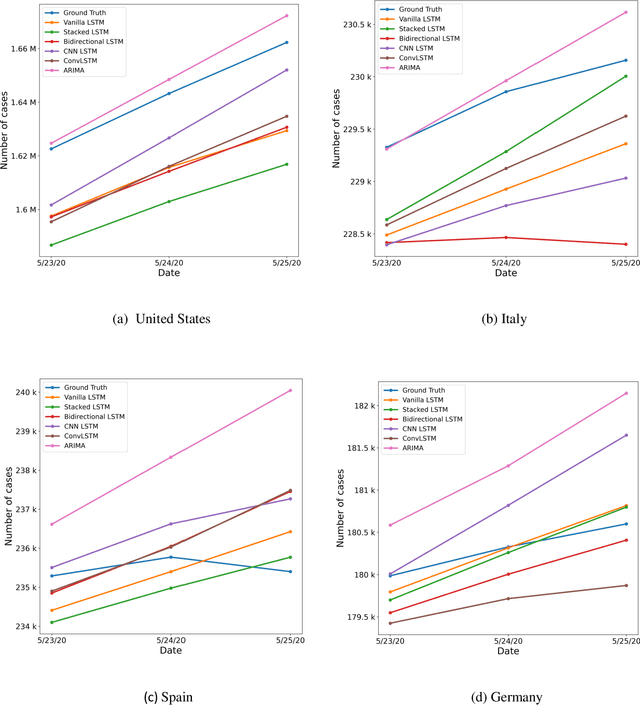
Abstract:Coronavirus disease 2019 (COVID-19) is a global public health crisis that has been declared a pandemic by World Health Organization. Forecasting country-wise COVID-19 cases is necessary to help policymakers and healthcare providers prepare for the future. This study explores the performance of several Long Short-Term Memory (LSTM) models and Auto-Regressive Integrated Moving Average (ARIMA) model in forecasting the number of confirmed COVID-19 cases. Time series of daily cumulative COVID-19 cases were used for generating 1-day, 3-day, and 5-day forecasts using several LSTM models and ARIMA. Two novel k-period performance metrics - k-day Mean Absolute Percentage Error (kMAPE) and k-day Median Symmetric Accuracy (kMdSA) - were developed for evaluating the performance of the models in forecasting time series values for multiple days. Errors in prediction using kMAPE and kMdSA for LSTM models were both as low as 0.05%, while those for ARIMA were 0.07% and 0.06% respectively. LSTM models slightly underestimated while ARIMA slightly overestimated the numbers in the forecasts. The performance of LSTM models is comparable to ARIMA in forecasting COVID-19 cases. While ARIMA requires longer sequences, LSTMs can perform reasonably well with sequence sizes as small as 3. However, LSTMs require a large number of training samples. Further, the development of k-period performance metrics proposed is likely to be useful for performance evaluation of time series models in predicting multiple periods. Based on the k-period performance metrics proposed, both LSTMs and ARIMA are useful for time series analysis and forecasting for COVID-19.
 Add to Chrome
Add to Chrome Add to Firefox
Add to Firefox Add to Edge
Add to Edge